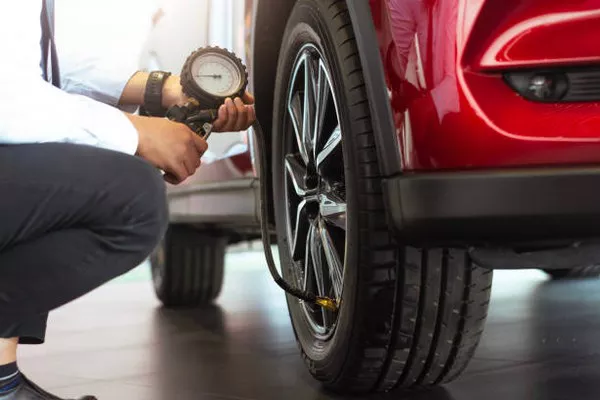Maintaining the correct tire pressure is essential for vehicle safety, fuel efficiency, and tire longevity. Whether you drive a car, motorcycle, or bicycle, having a reliable tire pressure gauge is crucial. However, not everyone wants to spend a fortune on a high-end gauge. Fortunately, there are many affordable yet accurate and durable options available.
In this article, we will explore the best cheap tire pressure gauges, their working principles, advantages, and key features to consider before making a purchase.
How a Tire Pressure Gauge Works
A tire pressure gauge is a simple yet essential tool used to measure the air pressure inside a tire. It works based on the principle of pressure sensing. When the gauge is pressed onto the valve stem, air enters the device and applies force on an internal sensor, which then converts this force into a readable pressure value.
There are three main types of tire pressure gauges:
- Stick or Pencil Gauges – These are the most basic and affordable gauges. They have a small cylindrical body with a sliding measurement bar that pops out when air pressure is applied.
- Dial Gauges – These feature an analog dial with a needle that points to the pressure reading. Some come with a built-in hose and even a release valve for easy adjustments.
- Digital Gauges – These use electronic sensors to display the pressure reading on an LCD screen. They are usually battery-powered and provide high accuracy.
Why Tire Pressure Matters
Before diving into the best cheap tire pressure gauges, it’s important to understand why monitoring tire pressure is crucial.
- Safety – Underinflated tires can overheat and cause blowouts, while overinflated tires reduce traction and increase braking distance.
- Fuel Efficiency – Properly inflated tires reduce rolling resistance, leading to better fuel economy.
- Tire Longevity – Incorrect tire pressure leads to uneven tread wear, reducing the lifespan of your tires.
- Handling and Comfort – Proper tire pressure ensures a smoother ride and better control over your vehicle.
Best Cheap Tire Pressure Gauges
1. AstroAI Digital Tire Pressure Gauge
Type: Digital
Price Range: $10-$15
Features:
- LCD display for easy reading
- 0-150 PSI range
- Battery-powered
- Auto shut-off to preserve battery life
- Compact and ergonomic design
Pros:
- High accuracy
- Easy to use in low light conditions due to a backlit display
- Affordable for a digital gauge
Cons:
Requires battery replacement over time
2. JACO ElitePro Tire Pressure Gauge
Type: Analog (Dial)
Price Range: $15-$20
Features:
- Heavy-duty construction
- 0-60 PSI range
- Built-in air bleeder valve
- Flexible hose for easy access
Pros:
- No batteries required
- Rugged and durable
- Accurate and easy to read
Cons:
Bulkier than stick or digital gauges
3. Milton S-921 Pencil Tire Gauge
Type: Stick/Pencil
Price Range: $5-$10
Features:
- Compact and lightweight
- 5-50 PSI range
- No batteries required
Pros:
- Very affordable
- Easy to carry in a glove box
- No need for batteries
Cons:
- Less precise compared to digital and dial gauges
- Harder to read in low light conditions
4. Rhino USA Heavy Duty Tire Pressure Gauge
Type: Analog (Dial)
Price Range: $15-$20
Features:
- 0-75 PSI range
- Shock-resistant casing
- Glow-in-the-dark dial
- Built-in deflator valve
Pros:
- Very durable
- Accurate and easy to read
- No batteries needed
Cons:
Slightly more expensive than other budget options
5. Accu-Gage by Milton Dial Tire Pressure Gauge
Type: Analog (Dial)
Price Range: $10-$15
Features:
- 0-60 PSI range
- Rugged metal body
- Pressure holding function for easy reading
Pros:
- Affordable for a dial gauge
- High accuracy
- No batteries required
Cons:
Requires calibration over time
Factors to Consider When Choosing a Cheap Tire Pressure Gauge
When selecting the best budget tire pressure gauge, consider the following:
- Accuracy – Digital gauges tend to be the most precise, followed by dial gauges. Stick gauges are generally less accurate.
- Durability – A metal body or rubber casing can protect the gauge from damage.
- Ease of Use – Consider if you prefer an LCD display, an analog dial, or a simple stick gauge.
- Measurement Range – Ensure the gauge can measure the PSI range of your vehicle’s tires.
- Portability – Stick gauges are the smallest and easiest to carry, while dial gauges are bulkier but offer better readability.
- Extra Features – Some gauges come with built-in air bleeder valves, hoses, or glow-in-the-dark dials for added convenience.
How to Use a Tire Pressure Gauge Correctly
- Check the Recommended Tire Pressure – Find the correct PSI for your vehicle in the owner’s manual or on the driver’s side door frame.
- Use the Gauge When Tires Are Cold – Tire pressure readings are most accurate when the tires are cold (before driving).
- Remove the Valve Cap – Unscrew the cap from the tire’s valve stem.
- Press the Gauge Firmly – Ensure a tight seal between the gauge and valve stem to avoid air leaks.
- Read the Measurement – For digital gauges, the PSI will appear on the screen. For dial and stick gauges, note the position of the needle or measurement bar.
- Adjust Pressure if Needed – Inflate or deflate the tire accordingly. If using a gauge with a built-in release valve, press it to release excess air.
- Reinstall the Valve Cap – Once done, put the cap back on to prevent dirt from entering the valve.
Conclusion
A tire pressure gauge is an inexpensive yet crucial tool for maintaining vehicle safety and performance. While high-end gauges offer advanced features, budget-friendly models can still provide accurate readings.
Regularly checking your tire pressure with a reliable gauge will improve your vehicle’s efficiency, safety, and overall performance. Investing in a quality but affordable tire pressure gauge is a small step that can save you money in the long run while ensuring a safer driving experience.

